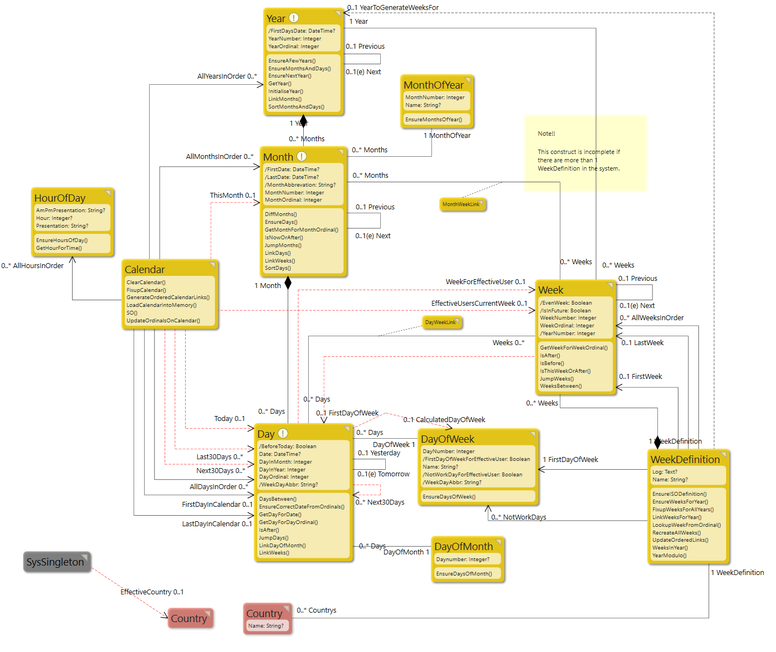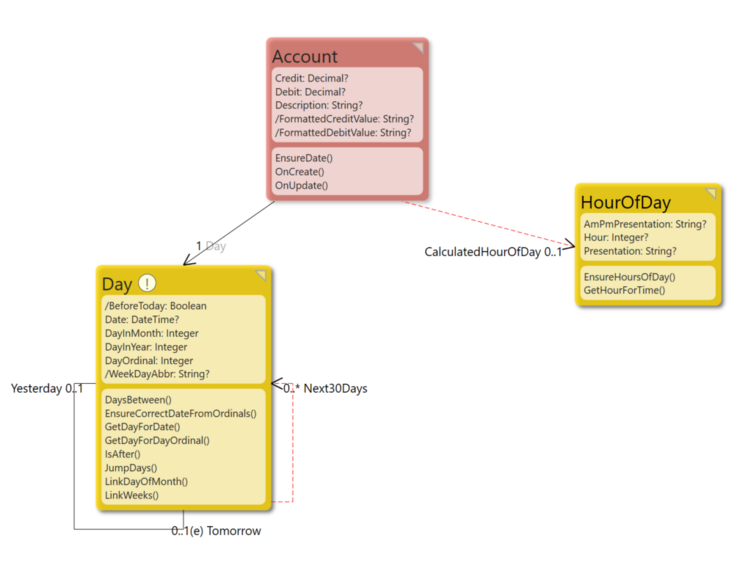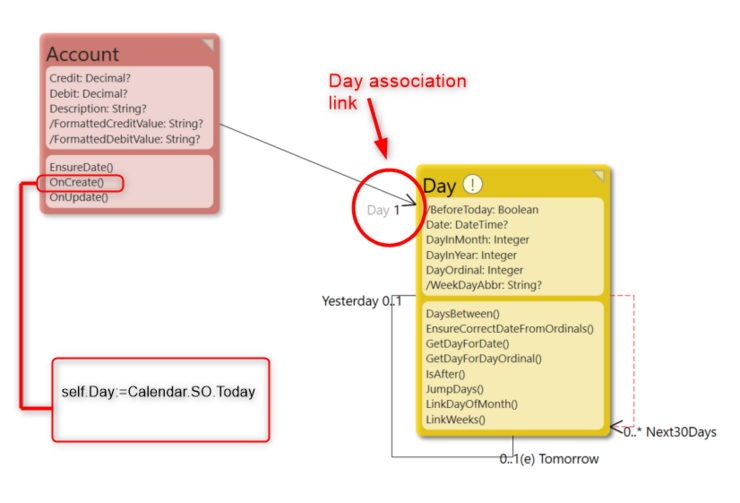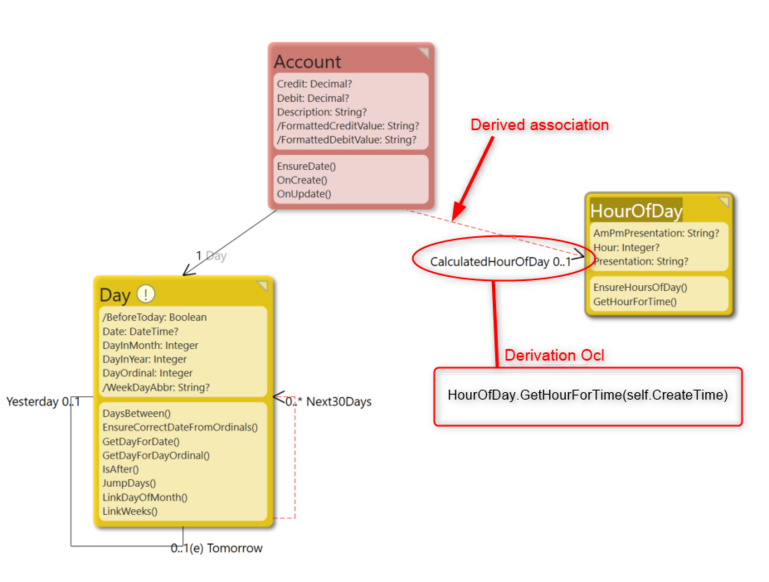What is it?
The Calendar package is a model that implements classes, making aggregation (for statistics, for example) easy.
It follows a common pattern with dimensions from data analysis. By prepopulating the database with days, months, years, weeks, etc., you can easily (and efficiently) find data to present in a diagram or table.
This model is cross-linked between all entities making the "conversion" between different calendar objects easy.
This package also contains views for creating, viewing, and maintaining the model content.
Download it here
Notes on Usage
- The Calendar "main class" is a Singleton. Use Calendar.SO as a short way to access the singleton object.
- For example in OCL:
Calendar.SO.Todaywill return a Day object for today.
- For example in OCL:
- Use the methods in Calendar to quickly find the Day for a given date when you link new or existing data to the structure.
- There are also several helper functions to find the next/previous day, week, or month or calculate the time between them.
- For example in OCL:
Day.GetDayForDate()returns a Day object by building a dictionary first for quick lookups.
- For example in OCL:
- Integers called Ordinals are used to have a stable way to calculate how far apart objects are in time.
Starting Up
- To create the data structure, start by using an action to create the years you want.
- Then with that, call FixupCalendar to create months and days of the calendar. You can call FixupCalendar many times without losing any data. It will simply update or correct problems.
- Weeks are a bit special. Week definitions vary in different parts of the world. Therefore, the WeekDefinition class sets the first day of the week, and weeks are then generated based on that.
- You can also define Saturday and Sunday (for example) as the "days off" every week.
- Use the country setting to define the default week definition for your users.
How To Use the Calendar Package in Your Model
- Merge the Calendar package into your model using TKLiveView.
- For all the Classes you want to capture the Date and Time details of records that can be used for detail statistical analysis, link the classes to the Day Class in the Calendar package. The Day Class is the linking point between your model and the Calendar package.
Example: Account Class that will be used for a Detailed Statistical Analysis
The Calendar package when setup contains data on the years created, their months and days so the only remaining thing to do is to link your Model Classes to the existing days and these days provide access to their months and year.
- Create a unidirectional relationship between the Account Class and Day Class
How to set the Day Association Link Data
- If the date should be set on the same day when class data is added or created, then use
Calendar.SO.Todayto set Day association data link
OnCreate function body on Account Class
self.Day:=Calendar.SO.TodayIf Account Class has existing data and dates that you want to link to the Day Class, use the GetDayForDate Method on Day Class to set the Day association data link
Account.allinstances->foreach(i|
i.Day:=GetDayForDate(self.CreateTime)
)where self.CreateTime is the date and time attribute on Account Class.
How to Get the Hour of a Date
Create a unidirectional relationship between the Account Class and HourOfDay Class in the Calendar Package
Set the association to Derived and Set the DerivationOcl of CalculatedHourOfDay
HourOfDay.GetHourForTime(self.CreateTime)where self.CreateTime is the date and time attribute on Account Class.




